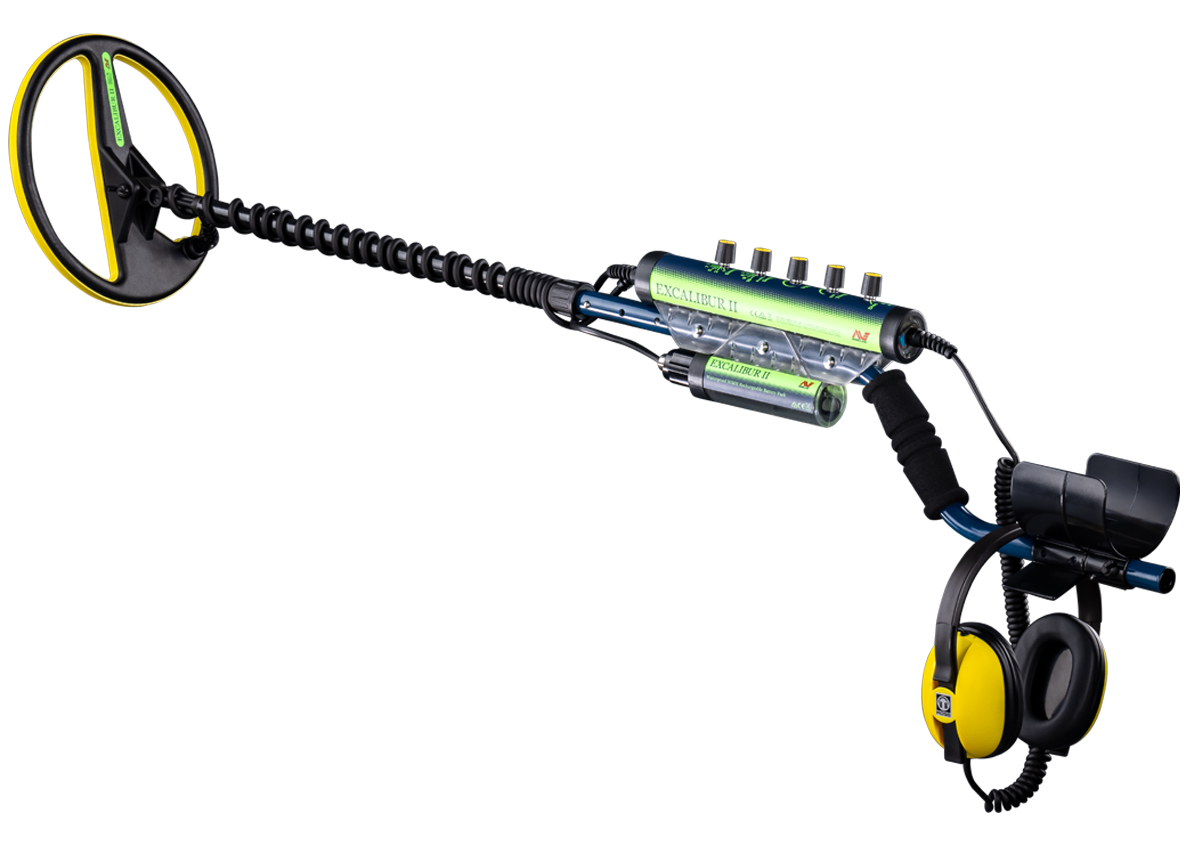As a former officer with an Army Infantry Unit I learned the Mantra, "keep it simple and waterproof". The Minelab Excalibur metal detector exemplifies this lesson and so I will cover the basic settings that will get the new detectorist up and running with this excellent machine.
Discrimination: This is an easy one. Keep it at minimum or completely counter clockwise. The Excalibur does of superb job of rejecting iron and with the setting on minimal discrimination you will be running the machine at its full potential. When I was experimenting with settings during the recording of Basic Ear Training for Excalibur I was amazed that the small thin gold rings became invisible with even a small amount of discrimination.

I used my original Excalibur in the photo above (I have two... this one and the Excalibur II) it is a bit scarred, but each scratch is at least 5 gold rings
Sensitivity: When you first arrive at the beach, place your coil on the wet sand. Turn your Sensitivity knob to 11:00 o'clock (or looking at the number dial at the # 7 on the Excalibur II) For right now leave it there. We will come back to this, but for now start with your Sensitivity control at 11:00 o'clock.
Volume: Set your Volume control at 1:00 o'clock. This is a starting point - we will come back to this.
Discrimination/Pinpoint: Make sure your machine is in Discrimination.
Off/Threshold: While placing your detector coil on the wet sand and wearing your headphones turn your detector on. Slowly turn your Threshold up until you can barely hear the Threshold tone. Imagine there is a mosquito in the room and you can only hear it if you listen intently for it. This will give you a good idea of where your Threshold adjustment should be.
From this point forward the two knobs you will be tweaking the most will be the Sensitivity and Threshold controls. Bear in mind you always want to be conscious of moving the Sensitivity as far counter clockwise as you can get away with. In fresh water environments you will be able to push the Sensitivity further up, because the detector is not fighting the salt matrix. But in the salt water you will have to start at about the 10:00 o’clock position then while sweeping the coil slowly on the wet sand listen to what it is telling you. If it is falsing quite a bit you need to back off on your Sensitivity control.
Note I do not mind the occasional soft falsing as it lets me know I am riding my detector a bit at the edge of its optimal performance. If the water has a higher salt content the falses will come in earlier on the dial and you will have to back off with less sensitivity. The same thing goes for mineralization.
If you are in an environment with lots of Black Sand… you will also have to back off on the Sensitivity control. Note as you are making your Excalibur more sensitive you will sometimes have to turn down your Threshold.
Learning this dance between the Sensitivity and Threshold controls is something you will get better at with practice. The sign of a seasoned hunter is when you check in with your Sensitivity control on occasion to see what you can get away with. I have had to make radical adjustments on these settings from one day to the next when the salt content of the ocean fluctuates.
So these basic settings will get you started. I will dig in more depth into each control knob in the next two installments of this blog.
Tony Diana
Basic Ear Training For Excalibur





















Comments